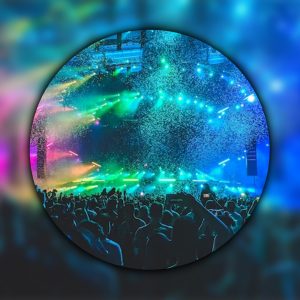Teaching Music Remotely: Strategies for Students With Disabilities


In recent years, remote learning has become an integral part of education. The global shift towards online instruction has affected students of all backgrounds, including those with disabilities. Teaching music remotely presents both challenges and opportunities for educators and students alike, but when it comes to students with disabilities, additional considerations must be taken into account. In this article, we will explore strategies and best practices for teaching music to students with disabilities in a remote learning environment, emphasizing inclusivity, accessibility, and effective communication.
Before delving into specific strategies, it is crucial to recognize the diversity of disabilities that students may have. Disabilities can vary widely, including physical disabilities, sensory impairments, cognitive disabilities, and more. Each student’s needs are unique, and as music educators, it is our responsibility to provide an inclusive learning environment that accommodates these differences.
Adapted Instructional Materials
One of the first steps in teaching music remotely to students with disabilities is to provide adapted instructional materials. These materials may include large-print music sheets, Braille notation, or tactile graphics for students with visual impairments. For students with cognitive disabilities, simplified notation and visual aids can be used to enhance comprehension.
Technology can be a powerful tool in making music education accessible to students with disabilities. Consider the use of assistive technology such as screen readers, speech-to-text software, and adaptive musical instruments. These tools can help students engage with music lessons more effectively and independently.
Personalized Learning Plans
To meet the unique needs of each student, it is essential to develop personalized learning plans (PLPs). PLPs take into account a student’s disability, strengths, weaknesses, and learning preferences. They provide a roadmap for the music educator to tailor instruction accordingly. Collaborating with exceptional education professionals can be invaluable in creating effective PLPs.
Effective communication is at the core of successful remote music instruction for students with disabilities. Teachers should establish clear lines of communication with students, caregivers, and support professionals. Regular check-ins, feedback sessions, and open channels for questions and concerns are vital.
Multisensory Instruction
Engaging multiple senses in the learning process is particularly beneficial for students with disabilities. Incorporate multisensory activities into music lessons, such as rhythm exercises that involve clapping, drumming, or using body movements. These activities help reinforce musical concepts and make learning more interactive and enjoyable.
Incorporating visual and auditory cues can enhance comprehension for students with disabilities. For instance, use color-coding for different musical elements or provide verbal descriptions of musical patterns. Visual aids, like charts and diagrams, can help students with cognitive disabilities grasp complex musical concepts.
Flexible Assessment Methods
Traditional assessments may not always be suitable for students with disabilities. Instead, consider more flexible assessment methods, such as performance-based assessments or portfolios. These alternative approaches allow students to demonstrate their musical understanding in ways that align with their abilities.
In a remote learning environment, collaboration is critical. Establishing support teams that include teachers, special educators, therapists, and parents can provide a comprehensive network of assistance for students with disabilities. Regular meetings and shared resources help ensure that all stakeholders are working together to support the student’s musical journey.
Encouraging Self-Advocacy
Empowering students with disabilities to become self-advocates is a crucial aspect of remote music instruction. Teach them about their strengths and challenges, and encourage them to express their needs and preferences. This fosters independence and helps students take an active role in their learning process.
Creating a positive and inclusive learning environment is essential for all students, but it holds particular significance for those with disabilities. Foster a sense of belonging and acceptance in your virtual music classroom. Encourage peer interactions, celebrate achievements, and address any instances of discrimination or exclusion promptly.
Continuous Professional Development
Teaching music remotely to students with disabilities requires ongoing learning and adaptation. Music educators should invest in continuous professional development to stay updated on best practices and new technologies in special education and music instruction. Webinars, workshops, and online courses are valuable resources for honing these skills.
Teaching music remotely to students with disabilities is a challenging but rewarding endeavor. By understanding the diverse needs of students, utilizing adaptive materials and technology, and fostering effective communication, music educators can create inclusive and accessible learning environments. Personalized learning plans, multisensory instruction, and flexible assessment methods further support the musical growth of students with disabilities.
Collaboration among educators, parents, and support professionals, along with the encouragement of self-advocacy, is vital in empowering students to thrive in a remote music learning setting. Cultivating a positive and inclusive environment ensures that every student, regardless of their abilities, can experience the joy and benefits of making music. Finally, continuous professional development keeps music educators equipped with the knowledge and skills needed to excel in remote instruction for students with disabilities.
